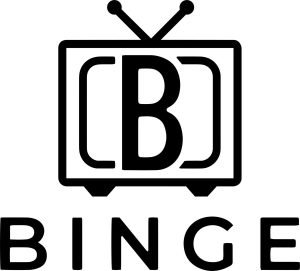We break down the pros and cons.
Specialists in FDA cybersecurity compliance for medical devices
Marketing a medical device is exciting—until you hit the cybersecurity and regulatory wall. Requirements shift. Threats evolve. Documentation piles up. And the pressure to get to market on time never lets up. That’s why many manufacturers bring in specialists who live and breathe the FDA’s expectations. Enter Blue Goat Cyber.
Who is Blue Goat Cyber?
Forget generalist security shops. This is a U.S.-based team dedicated primarily to medical device manufacturers. Not hospitals. Not fintech. Just devices. Their claim to fame? A 100% FDA clearance rate across client submissions. They position themselves not as a testing vendor, but as a regulatory partner—hands-on from early design through postmarket.
If your goal is to ship a secure device and prove it convincingly to the FDA, this niche focus makes a real difference.
FDA Cybersecurity: What It Is and Why You Should Care
You can build a brilliant device and still stall out if your cybersecurity story isn’t airtight. The FDA expects thoughtful design controls, transparent SBOMs, credible threat modeling, realistic risk assessments, and a plan to keep the device safe after launch. Section 524B of the FD&C Act underlines it: you need vulnerability response, secure updates, and continuous monitoring baked into your process.
In other words, cybersecurity isn’t a “once-and-done” test—it’s a lifecycle commitment. That’s exactly the lane Blue Goat Cyber operates in.
What Services Do They Offer?
Blue Goat Cyber’s lineup maps directly to FDA premarket and postmarket expectations:
- Secure Product Development Frameworks (SPDFs): Build security into your design controls from day one.
- Threat Modeling & Risk Assessment: Practical, FDA-ready artifacts—not theoretical white papers.
- SBOM Support: Creation, validation, and narratives that satisfy reviewers.
- Penetration Testing: Device-aware testing that ties findings to risk and remediation.
- Submission Rescue & De-Risking: Fixing gaps when audits fail or documentation falls short.
- Postmarket Monitoring: Vulnerability intake, triage, and response planning aligned with FDA guidance.
- Legacy Device Risk Management: Keeping older products compliant and defensible.
- Secure Update Support: Firmware/software update practices that meet the agency’s expectations.
Everything is delivered by U.S.-based professionals with dual fluency in cybersecurity and FDA regulatory frameworks. The output isn’t just a report—it’s FDA-ready documentation and clear, actionable remediation steps.
Why Manufacturers Outsource This Piece
Even strong engineering teams struggle to keep pace with guidance changes and documentation nuance. And the cost of missteps is brutal: rework, delays, and missed launch windows. Outsourcing to a specialist reduces that risk. With Blue Goat Cyber, you get process, templates, reviewer-friendly narratives, and an experienced guide through the submission maze.
How Their Process Feels in Practice
Blue Goat Cyber’s approach is collaborative. Expect working sessions, document iterations, and advice that ties technology decisions back to regulatory language. They don’t disappear after delivering a test; they help you close findings, shape your justification, and prep for questions. When submissions wobble, they steady the wheel.
Is it a lift for your team? Yes. But the structure keeps momentum, and the payoff is fewer surprises when your file hits the FDA.
The Pros of Working with Blue Goat Cyber
1) Verified outcomes (not just deliverables)
That 100% clearance rate matters. It signals they understand what reviewers expect and how to present security work credibly.
2) Primary medical device focus
Every template, checklist, and conversation maps to device reality and FDA language. No need to translate from another industry.
3) Lifecycle coverage
From SPDFs to postmarket monitoring, you get end-to-end support that reduces rework and defends your device long after launch.
4) Submission rescue capability
They regularly step in to de-risk or recover submissions that are stuck. If you’re behind schedule or light on docs, they’ve been there.
5) FDA-ready documentation
Pen tests, SBOMs, threat models—produced to be read by regulators, not just engineers. That alone can shave weeks off the back-and-forth.
6) U.S.-based experts
The work stays onshore, which helps with confidentiality, responsiveness, and alignment with FDA expectations.
The Cons (Minor, But Worth Knowing)
1) Narrow scope by design
If you’re outside medical devices—or chasing non-FDA pathways—this isn’t your shop.
2) Engagement requires time from your team
This is a partnership, not a black box. You’ll need SMEs available to move quickly.
3) Premium positioning
Specialized expertise and submission support cost more than a one-off generic pen test. You’re paying for reduced risk and speed.
4) Documentation is rigorous
Great for the FDA, but expect tighter writing cycles and evidence gathering than a typical security engagement.
What Stands Out Beyond the Checklists
- Alignment with Section 524B: Their postmarket playbooks (vuln intake, coordinated disclosure, patching) are built with this in mind.
- SBOM pragmatism: They don’t just generate SBOMs; they help you justify them and keep them useful as the product evolves.
- Risk narratives that land: Findings are tied to patient safety and clinical context—exactly what reviewers look for.
- Legacy device realism: Not everything can be refactored. They craft defendable mitigation strategies where full fixes aren’t feasible.
Who Gets the Most Value?
- Startups and scale-ups pushing toward first clearance who want to avoid the “surprise rewrite” phase.
- Established manufacturers are modernizing processes to satisfy 524B without slowing roadmaps.
- Teams in trouble after a failed audit or an FDA RTA that need a focused rescue with minimal churn.
- If you already have mature, well-documented security controls and submission muscle, you may need less of their framework—and more targeted help (e.g., pen testing or SBOM narrative tuning). They can still slot in.
Pricing & Expectations (At a Glance)
You’re investing in outcomes: fewer cycles, clearer evidence, faster decisions. The tradeoff is cost and engagement time. If you only want a quick test to tick a box, this won’t be the cheapest path. If you want a defensible file that moves, the calculus changes.
Final Verdict: Is Blue Goat Cyber a Good Investment?
Yes—if you’re a medical device manufacturer aiming for a clean, confident path through FDA cybersecurity review. The value is in specialization, lifecycle coverage, and documentation that speaks the FDA’s language. Their 100% clearance rate, submission rescue track record, and U.S.-based team make them a reliable partner when timing and credibility matter most.
If you need general-purpose security for a non-medical product, look elsewhere. But if you’re navigating the FDA and want to reduce risk, avoid do-overs, and keep devices compliant postmarket, Blue Goat Cyber earns its spot on your shortlist for 2025.


































